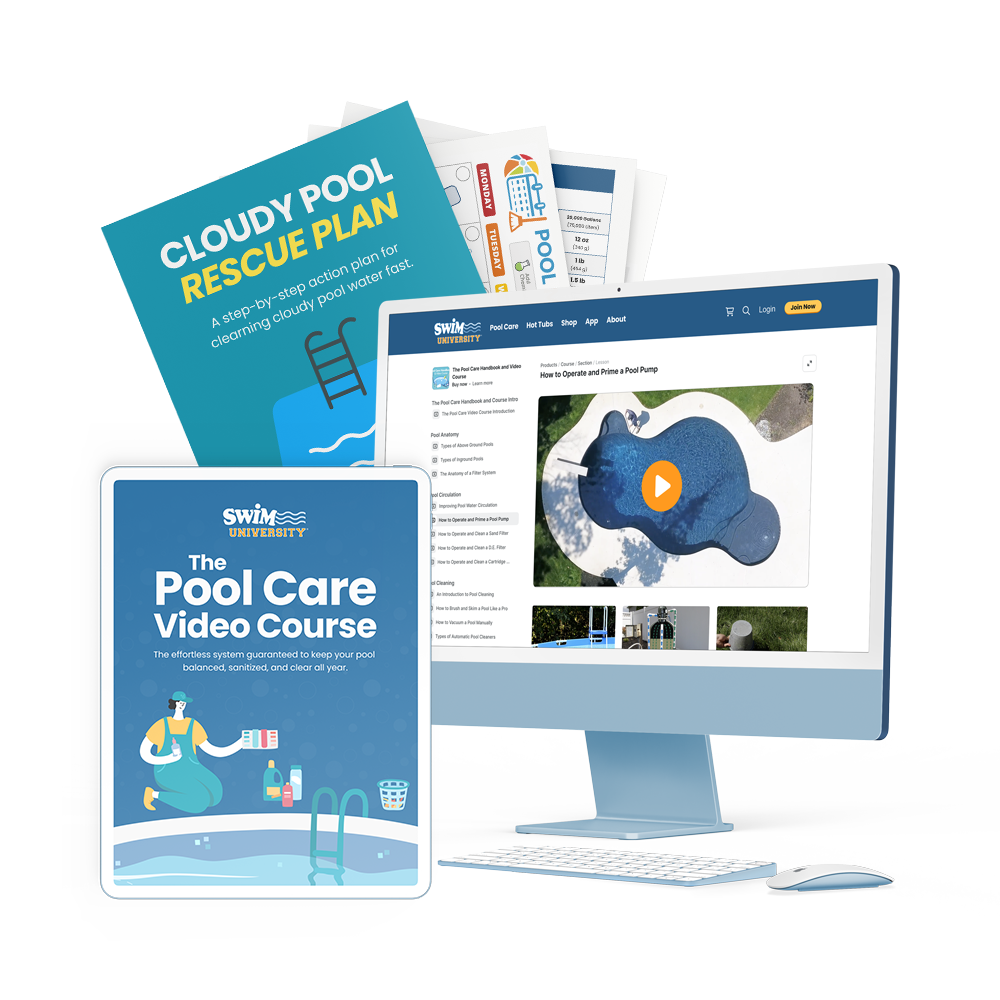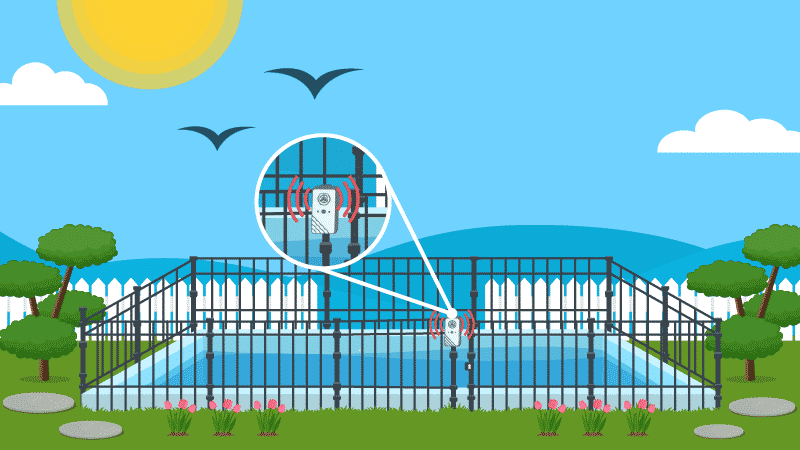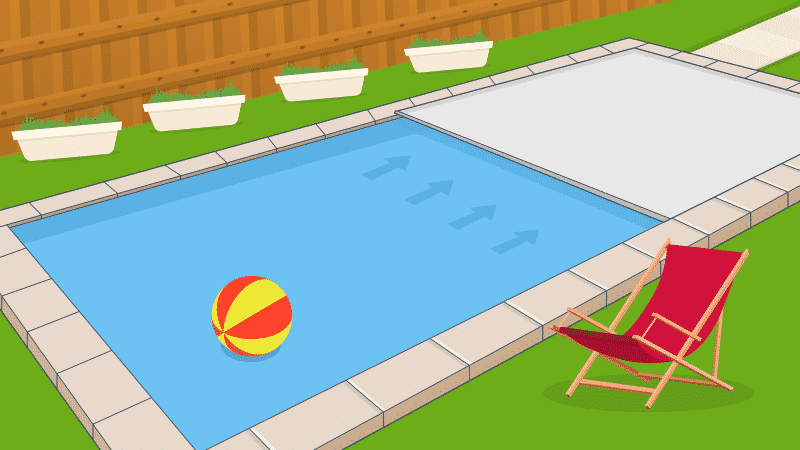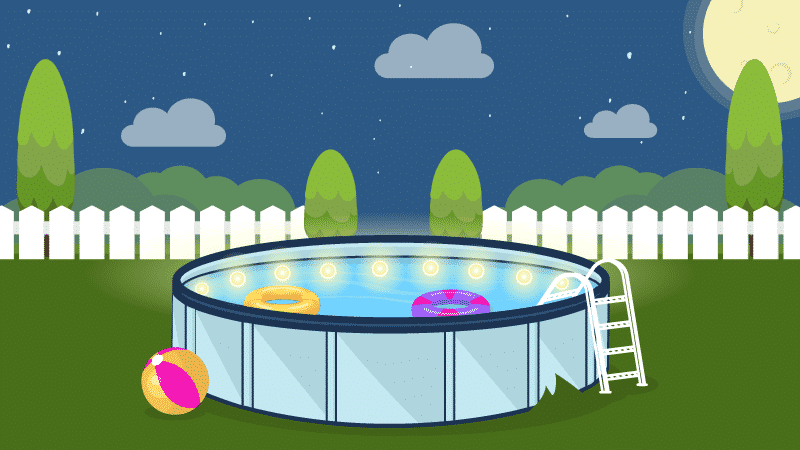What Is a Pool Aerator and Are They Worth It?
Pool aerators are a great way to help keep your water cooler and improve your pool’s circulation. And while things like your return jets can also aerate your water, a swimming pool aerator is an easy thing to install and may be a worthwhile investment — especially if you’re in a hotter climate.
Here’s everything you need to know about how pool aerators work and whether or not it’s worth owning one.
Stop wasting time and money with confusing water chemistry and maintenance. Our effortless system guarantees to keep your pool balanced, sanitized, and crystal clear all year. Works for all pools including saltwater.
What is a Pool Aerator?
A pool aerator is a water feature that pulls air into the water to increase oxygen levels, improve circulation, and help with chemical distribution. A dedicated aerator is usually attached to the side of your pool (like your coping or deck) and connected to your return line.
This easy-to-attach pool aerator creates a waterfall feature to help circulate your pool and cool down your water. And the swivel design lets you turn it under the water when it's not in use.
As it collects water from your pool, the pool aerator shoots it out in a stream, creating oxygen. Exposing water to air will help cool down your pool water, and the additional oxygen created by the aerator can reduce your pool water temperature by 3 to 4 degrees Fahrenheit.
For the best results, run the aerator at night. Cooler air temperatures will bring down the water’s temperature faster than running it during the day.
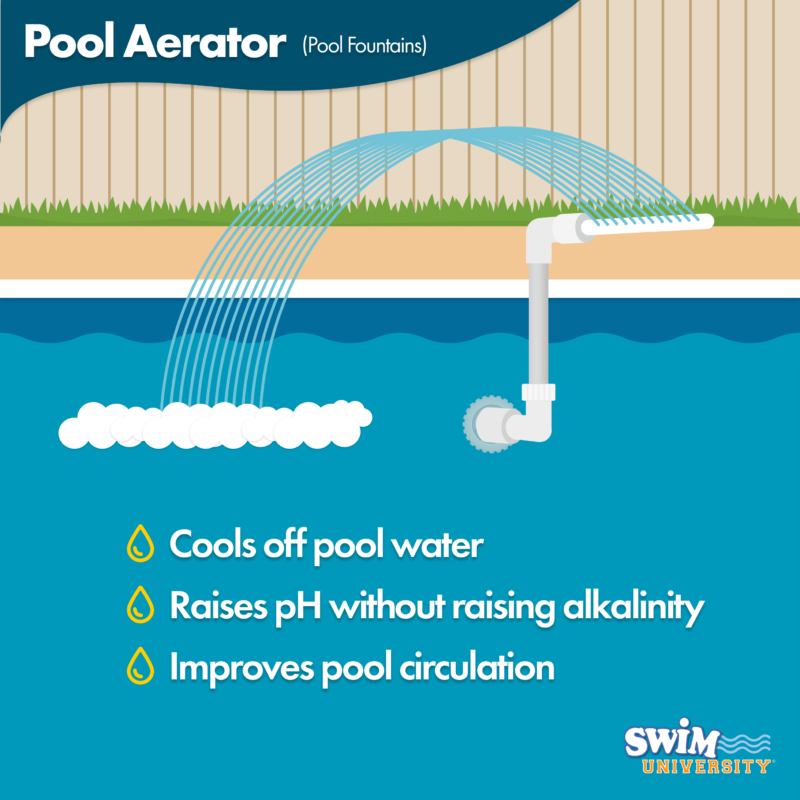
Benefits of a Pool Aerator
There are several benefits to having a pool aerator, especially for pool owners with chronically low pH, circulation issues, or hot pool water. So if any of the following apply to your situation, consider installing one.
Note: If you already have water features in your pool, like a pool fountain, these also offer aeration. So you might not need to purchase and install a separate aerator.
Cools Down Pool Water in Hot Climates
When you’re pool’s water temperature is consistently subjected to hot air temperatures, it can be impossible to cool down. And an aeration system is the only way to cool down hot water.
Running an aerator at night will help bring oxygen to your water and bring down your temperature. However, if you live in a humid climate or your nighttime temperatures don’t drop, an aerator might not create the cool pool temperatures you’re looking for.
Cools Down Shallow and Above Ground Pools
An above ground swimming pool can get even hotter than its inground counterpart. Heat can transfer through the pool’s walls, which heats the water faster than an inground pool with hot air temperatures. And if you have a shallow pool without a deep end, the water temperature will increase even faster.
A pool aerator is a must-have in hot, dry, climates with an above ground pool or a smaller pool, like an Intex pool. That said, if your above ground pool doesn’t have a deck to attach a pool aerator, you’ll need to install a mister system.
Misters are standalone options that attach to your garden hose or spigot. These mister heads force water out into a mist that falls into your water to cool it down.
While pool aerators or misters will cool your pool down significantly, you may need to consider a pool cooler. Installing a pool chiller can help decreases pool water temperatures by 8 to 10 degrees Fahrenheit, which can be crucial to enjoying a pool in the hot summer months.
Raises pH Levels without Raising Alkalinity
If you need to quickly raise the pH levels in your pool without raising your total alkalinity, aeration is the only way to do it. Aeration increases oxygen and off-gases carbon dioxide from the water. And this removes carbonic acid, which raises pH without raising total alkalinity.
If your pH is rising too fast or your total alkalinity is very high, it can lead to calcium scaling. So if you do need to bring down your alkalinity levels, check out our pool maintenance guide on how to use muriatic acid to lower your alkalinity.
Improves Water Circulation
Adding oxygen to the water provides another way to circulate the water around the pool. Even pools with top-of-the-line filtration systems may experience stagnate water at the surface and scum lines.
You can prevent the build-up of stagnant water with a pool aeration system. In addition to your skimmer and return jets, an aerator keeps the water moving at the surface to stop the buildup from happening. And it also ensures the pool water chemicals interact with more water, allowing them to work more effectively.
Cools Down Your Pool Water
Hot summer days will gradually increase the pool water’s temperature, especially if your pool is in an area where there’s a lot of direct sunlight. When you notice the water getting too warm, turning the aerator on can quickly help decrease the heat in your pool.
But just know that it is possible to “over aerate.” You could cause your pool to get too cold, or lose water to evaporation or wind. This is more of an issue for pools in incredibly dry climates.
How to Aerate Your Pool Water
There are plenty of ways to aerate your water besides a pool aerator, including misters and your own pool water features. So whether or not your want to buy an aerator, there are several options for adding aeration to your pool water.
Install A Dedicated Pool Aerator
Pool aerators are installed into your pool’s deck or coping and attached to the return line or pool pump. With its own dedicated valve, it’s easy to manually adjust the flow of water coming out of your aerator.
So if you have your pool cover on and you need to turn it off or you want to increase the amount of surface area its covering, an aerator gives you plenty of control.
Use Existing Water Features
Your pool may already come with an integrated water feature, such as a water fountain, a waterfall, or deck jets. And these water features like this also provide some aeration.
Have an attached hot tub? Look for a feature that allows you to adjust the valves so that it spills over into the pool and aerates the water. Just make sure that water isn’t already heated if you plan to use the spa overflow feature.
Adjust the Angle of Your Return Jets
Angling the return jets provides a quick way to aerate your water without needing extra plumbing or hardware. Adjust the return jets so the water comes out angled as far toward the surface of the pool as you can possibly get it.
If your return has a separate fitting behind it, you’ll need to loosen the outer ring, re-angle the eyeball fitting, then tighten the outer ring again. Practice care when tightening things up. Under high torque, can break easily. And check out our guide on Pool Circulation if you need more help.
Is It Possible to Aerate Your Pool Too Much?
There is such thing as over-aerating a pool! Over-aeration can raise your pH levels beyond the recommended range. And high pH levels can damage your pool equipment.
Be sure to test your pH and total alkalinity regularly. Your pH should be between 7.4 and 7.6 and your total alkalinity should be between 100 and 150 parts per million (ppm).
To test the effects of aeration on your water, run your aerator or natural aeration features, like fountains and hot tub jets. Then take a reading one day and two days later. If your pH has risen dramatically with all other levels equal, you might be over aerating your water.
Frequently Asked Questions About Pool Aerators
Need more help with pool aeration? Here are some commonly asked questions and answers:
What does an aerator do for a pool?
A pool aerator adds oxygen to the water. And that oxygen helps to cool down the water and boost water circulation. It also helps raise your pH levels without bringing up your total alkalinity.
When should I run my pool aerator?
For the best results, run the aerator at night. Cooler air temperatures will bring down the water’s temperature faster than running it during the day.
How do you install a pool aerator?
Installing a pool aerator is fairly simple. It attaches to the side of your pool, like your deck or coping, and connects to your return lines. Because it features a dedicated valve, you can adjust the level of flow that comes out. Always follow the manufacturer’s directions when installing your aerator.
Does aerating pool lower alkalinity?
Because aerating your pool can raise pH, anything you add to lower both pH and alkalinity will only significantly lower your alkalinity. That means if you add a
4 Ways We Can Help With Your Pool
- Pool Care Cheat Sheets (Free): Easy-to-use downloadable guides to help you keep track of taking care of your pool this year.
- The Pool Care Handbook: An illustrated guide to DIY pool care, including water chemistry, maintenance, troubleshooting, and more.
- The Pool Care Video Course: You’ll get 30+ step-by-step videos and a downloadable guide with everything you need to know about pool maintenance.
- The Pool Care App: Enter your water test results. Get a custom treatment plan. Know exactly what chemicals to add to keep your pool clear.

